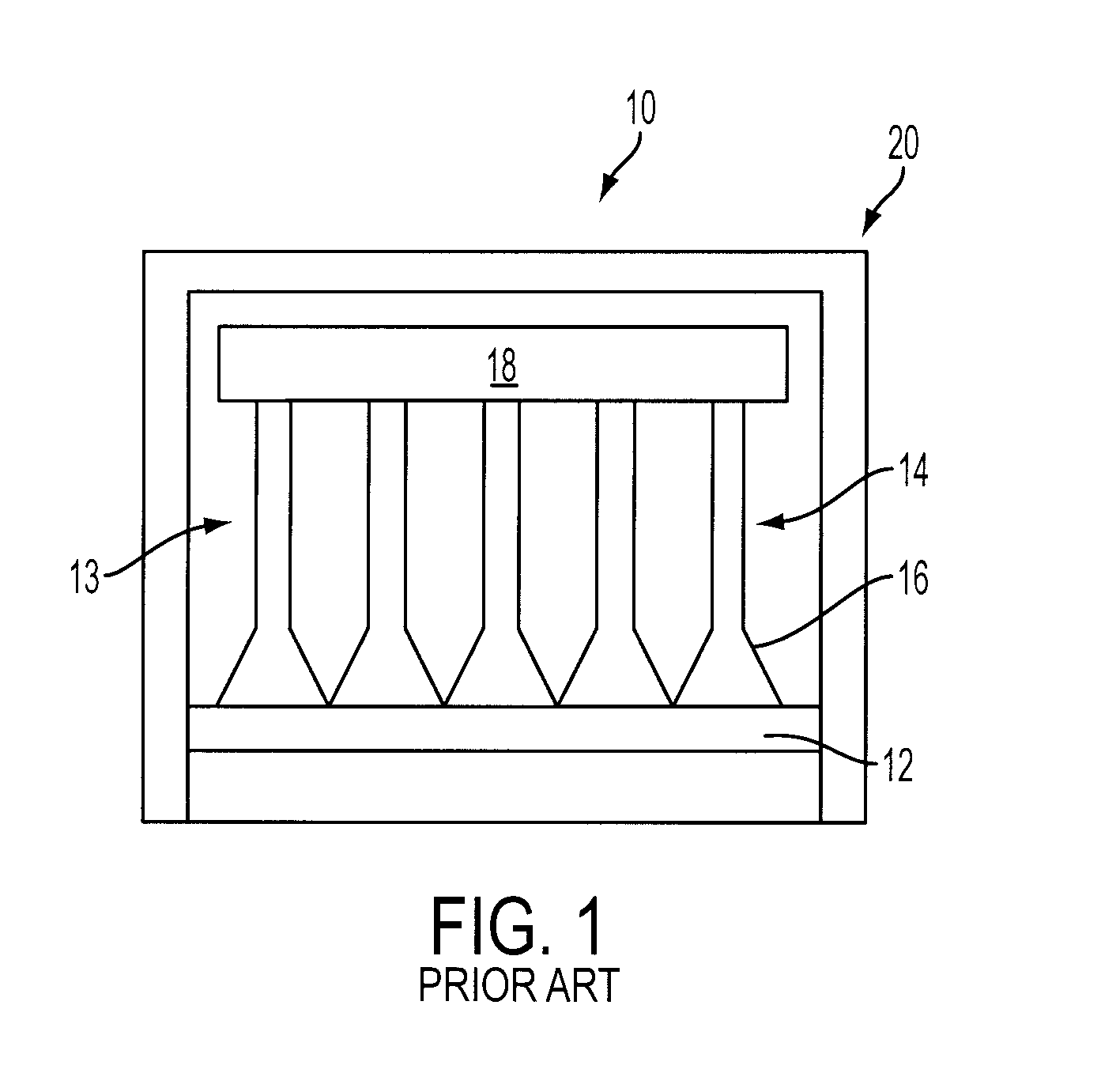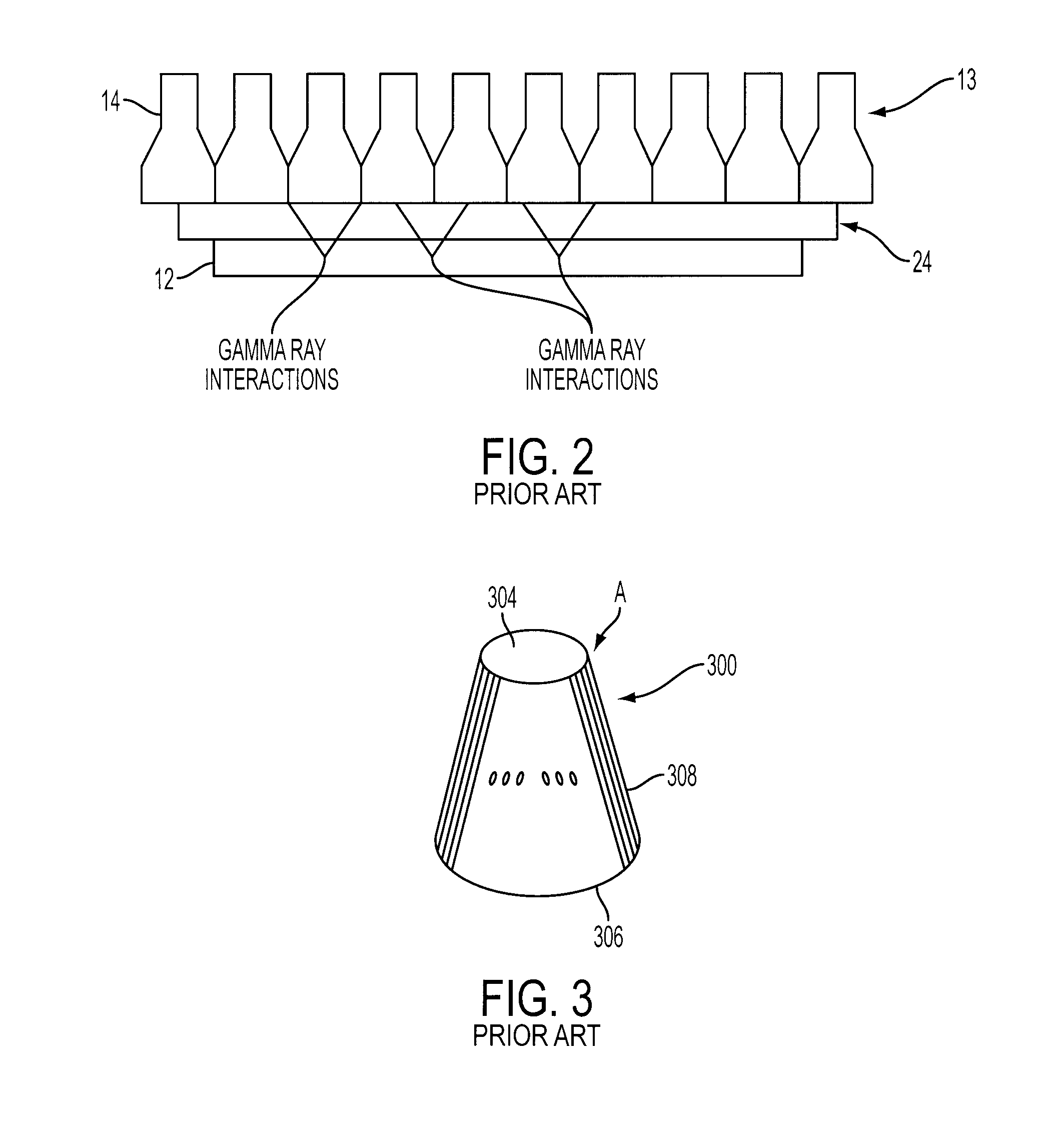Radiation detector having a fiber optic wedge with a plurality of parallel fibers
a fiber optic wedge and fiber optic technology, applied in radiation measurement, instruments, measurement devices, etc., can solve the problems of increasing the number of electronics channels one may potentially need, increasing the cost of a pet camera, and ps-pmts are more expensive than conventional single-channel pmts, etc., to achieve cost-effective and lower prices.
- Summary
- Abstract
- Description
- Claims
- Application Information
AI Technical Summary
Benefits of technology
Problems solved by technology
Method used
Image
Examples
Embodiment Construction
[0025]The following description is presented to enable one of ordinary skill in the art to make and use the disclosure and is provided in the context of a patent application and its requirements. Various modifications to the disclosed embodiments will be readily apparent to those skilled in the art and the generic principles herein may be applied to other embodiments. Thus, the present disclosure is not intended to be limited to the embodiments shown but is to be accorded the broadest scope consistent with the principles and features described herein.
[0026]Referring now to the drawings, and initially to FIGS. 4a and 4b, there are shown cross-sectional and perspective schematic illustrations of a radiation detector in accordance with the present disclosure and generally referenced by numeral 100. The radiation detector 100 can be a positron emission tomography (PET) camera detector and includes a scintillator array 102 having a plurality of scintillator crystals or elements 102a, a c...
PUM
 Login to View More
Login to View More Abstract
Description
Claims
Application Information
 Login to View More
Login to View More - R&D
- Intellectual Property
- Life Sciences
- Materials
- Tech Scout
- Unparalleled Data Quality
- Higher Quality Content
- 60% Fewer Hallucinations
Browse by: Latest US Patents, China's latest patents, Technical Efficacy Thesaurus, Application Domain, Technology Topic, Popular Technical Reports.
© 2025 PatSnap. All rights reserved.Legal|Privacy policy|Modern Slavery Act Transparency Statement|Sitemap|About US| Contact US: help@patsnap.com



